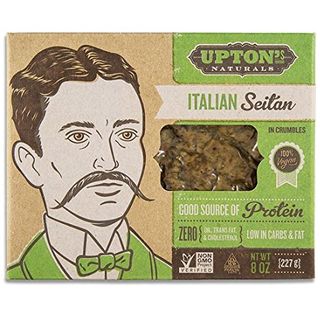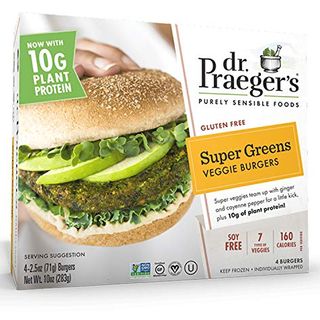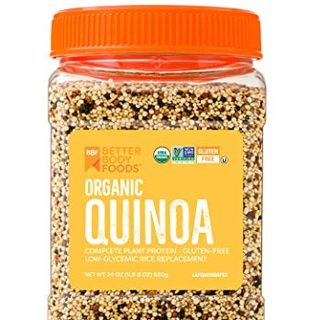Endurance athletes know the importance of getting enough protein. It’s one of the most crucial nutrients for building muscle and helping to repair those muscles. And it helps keep you feeling full so you can avoid mindlessly snacking in between meals. (Although there’s nothing wrong with a good mindful snack.)
If you’re eating a varied diet—yes, even if you’re a vegetarian—it’s more than likely you’re getting the protein you need, says New York-based dietitian Natalie Rizzo, M.S., R.D.
While the average person needs about 0.36 grams of protein per pound of body weight—46 grams per day for adults assigned female at birth and 56 grams for adults assigned male at birth, for those weighing 165 pounds—athletes need even more.
According to the American College of Sports Medicine, athletes need about 0.5 to 0.8 grams of protein per pound of body weight, or 75 to 128 grams per day based on a 165-pound person.
“Not only are athletes using their muscles more, they need more calories than the average Joe, too, for fueling and recovery,” Rizzo says.
Protein is naturally found in a variety of whole foods, including meat, fish, dairy, eggs, tofu, nuts and seeds, legumes like beans and lentils, and whole grains like quinoa. And that’s just the short list.
But over the past several years, protein has been added to a host of foods that otherwise wouldn’t have it—or would have very little. This includes everything from cookies and ice cream to pancake mix and cheese puffs. (Yes, cheese puffs!)
Rizzo suspects the surge in protein-added foods is thanks to the fact that protein can aid in weight loss. One paper from 2015 published in the American Journal of Clinical Nutrition suggests that a high-protein diet can help improve appetite and weight management, and mitigate certain metabolic syndrome risk factors.
But do athletes need to supplement their diets with these foods or even with protein powders, another popular way to get the macro? Here, we get to the meat of the matter.
Do you need added protein beyond whole foods?
“Most Americans who eat meat get more protein than they need in a day,” Rizzo says. “And according to the Academy of Nutrition and Dietetics, vegetarians who eat a balanced diet get an adequate amount.” Translation: No, you actually don’t need these foods with added protein or to add protein powder to every smoothie, pancake, or other food you make.
What’s more is the body can only use a certain amount of protein at any given time, roughly 30 to 40 grams, Rizzo says. “If you have a shake with 60 grams of protein after a ride your muscles aren’t getting all of that [protein],” she says.
Protein consumption has to be spread out over the course of an entire day.
“Large lump sums aren’t going to help you. It’ll break down into nitrogen and you’ll pee it out,” Rizzo says, recommending people spread their protein intake across five to six meals and snacks, rather than cramming it all into one or two meals.
So really, you never need extra protein?
Well, there are some cases when it might be a good idea to up your protein intake. For example, athletes who need to up their calories to fuel their performance and recovery might benefit from whole foods and foods with added protein, Rizzo says. It can be hard to get enough calories if you’re training for a century, for example, and something like a protein supplement might help you reach your calorie goals.
What’s more, explains Cara Harbstreet, M.S., R.D., owner of Street Smart Nutrition, is some athletes might not be timing their protein intake properly, which can negatively affect performance and recovery. Instead of eating more protein, she might recommend working with a dietitian to optimize protein intake. For example, your best bet is to consume at least 15 grams of protein within 30 minutes to two hours after a workout.
This content is imported from {embed-name}. You may be able to find the same content in another format, or you may be able to find more information, at their web site.
What should you look for on food and supplement labels?
If you decide you want to add protein to your diet through supplementation, it’s important to know exactly what you’re getting.
While one source of protein isn’t necessarily better than another, Rizzo says, if you’re eating foods with added protein, like cookies or ice cream, you’re getting a more processed version of the nutrient—protein isolate, for example—compared with, say, peanut butter or a turkey burger that offers a more natural protein source.
Plus, with more processed foods you run the risk of consuming excess sugar (or artificial sugar or sugar substitutes) and other preservatives. You’re also not getting other important nutrients that are found in whole foods—like healthy fat in peanut butter and iron in a turkey burger.
Rizzo points out that many protein-fortified foods contain new-age sweeteners like monk fruit and stevia. Experts with the Center for Science in the Public Interest say while these sweeteners are considered “safe” based on available research, they’d like to see it better studied.
What’s more: Harbstreet points out that protein powders and foods with added protein might also use sugar alcohols (like erythritol) to keep calorie counts down. “These can elicit uncomfortable GI symptoms so athletes may want to avoid them,” she says.
While Rizzo says there aren’t any red flags when it comes to specific ingredients, if processed foods with added protein or protein powders are your main source of the nutrient, that’s cause for some concern.
“Ultra-processed diets are not good for you,” she says. “They contribute to a whole bunch of health concerns.”
When it comes to protein supplements (or those powders) in particular, it’s also important to look for a third-party certification, Rizzo says. Because supplements aren’t regulated by the U.S. Food and Drug Administration, choosing a brand with a stamp of approval from NSF or USP can help ensure you’re getting what the label claims is inside.
“Some powders have higher levels of arsenic and lead than they should,” Rizzo says. But if you choose a reputable brand with a safety certification—meaning it checks that box for third-party testing—you can feel better about what you’re putting in your body.
Are sweets with added protein better for you?
Thanks to advertising and marketing, we can fall victim to thinking a food is better for us if it screams “high in protein!” or “zero-calorie!” or “sugar-free!” But it’s important to understand the bigger picture.
In the case of protein, while many products now contain more of the macronutrient, even some ice cream brands, like the infamous Halo Top, touts “only 360 calories per pint” with 21 grams of protein per container.
“I have so many problems with this,” Rizzo says. “Having a habit of eating a whole pint of ice cream—regardless of the calories—is not a great food habit to have.”
Harbstreet, who advocates for intuitive and non-diet approaches to eating, strongly advises against the health halo versions of sweets or desserts, like protein-packed ice cream or cookies.
“This drives a negative association with these foods, implying they’re only permitted when they show up in these unusually healthy forms…I seriously question if these food choices are made out of a true, genuine taste preference or because they’re serving as a replacement for the standard sweet,” she says.
Rizzo goes on to say that you’ll probably feel better if your 20 grams of protein come from a chickpea salad or lentil soup, rather than from an ice cream loaded with milk protein concentrate.
The takeaway?
Pumped-up protein sweets—or whatever protein products you prefer—can work if you like eating them and don’t rely on them as your main source of the nutrient. But going for the real thing (say, a full-fat serving of creamy ice cream) is still a healthy (and encouraged!) choice. That’s true, by the way, for sweets and your other protein sources: Whole foods always win when it comes to a balanced diet that supports performance and recovery. And remember, not everything you eat needs copious amounts of the muscle-building macro.
This content is created and maintained by a third party, and imported onto this page to help users provide their email addresses. You may be able to find more information about this and similar content at piano.io










